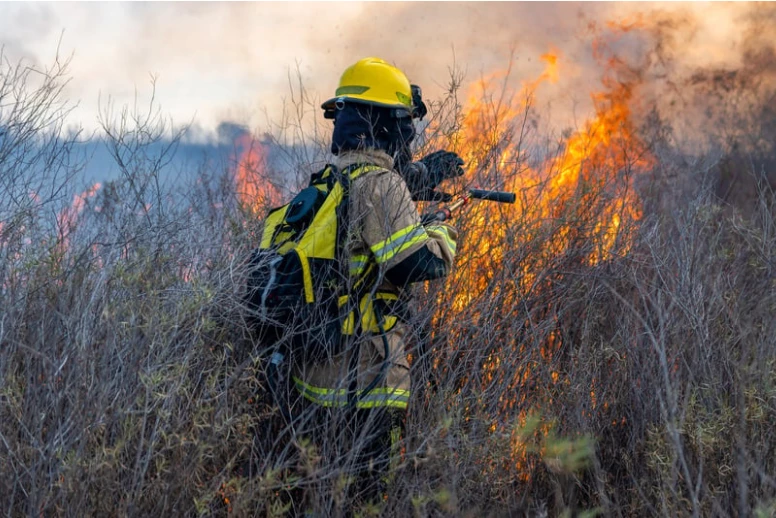The Preventing Emerging Threats Act of 2018: IDGA Insights & Overview
Add bookmarkFeaturing Insights From Certified International Privacy Professional, Scott Mathews
For years, drone researchers have been warning governments and citizens alike about the inappropriate or malicious use of drones. The fears became reality in August 2018, when Venezuelan President Nicolas Madura was the target of a drone based assassination attempt in Caracas. Those drones, reportedly DJI Matrice 600s, are typically used by professional photographers and could carry up to 13.2 pounds (enough to transport roughly 13 grenades or even a small IED). Over the past few years, drones have also been utilized in a wide variety of illegal activities such as dropping contraband into prisons, spying and disrupting law enforcement, and even harassing wildlife. According to the FAA website, reports of unauthorized unmanned aircraft (UAS) sightings from pilots, citizens and law enforcement have increased dramatically over the past two years. The FAA now receives more than 100 such reports each month.
On October 5, 2018 Trump signed the Federal Aviation Administration Reauthorization Act into legislation. This act funds the FAA through 2023 and includes the Preventing Emerging Threats Act of 2018.
The Preventing Emerging Threats Act of 2018 authorizes the Department of Justice and the Department of Homeland Security to ‘take actions” to “mitigate a credible threat that an unmanned aircraft poses to the security of a covered facility or asset.” This mitigation does not require a warrant or judicial review/oversight and could include physically disabling a drone, taking it over, intercepting its communications, or seizing the drone itself.
“Prior to the Preventing Emerging Threats Act being incorporated into the FAA reauthorization, there was a lot of legal uncertainty as to what DHS and DOJ could or could not do with counter-UAS [unmanned aircraft systems] technology and measures,” said Joseph Hoellere, government relations manager for the Security Industry Association. Certified International Privacy Professional Scott Mathews echoed this statement. Of what the process was like prior to the Act, Mathews said that the “United States Coast Guard (USCG) may have had some legal authority in very limited circumstances due to its military role.” He said that the, “United States Secret Service (USSS) could make a case for taking action to protect the life of the President or other protectees under its broad mandates,” and that “both agencies would have followed their established protocols for responding to possible threats.” Now there is one cohesive system in place.
The new legislation provides DOJ and DHS to detect, track and mitigate potential threats from small drones, including those used for recreational and commercial purposes. Though it is still illegal to shoot down an aircraft in national airspace, the government can now begin testing, evaluating and purchasing counter UAS technologies. Public RFPs are expected to become available within the next year once the agencies (DHS, DOJ, and DoD) narrow down their approaches for detection, identification, tracking, and mitigation. Considering the commercial UAS market is expected to reach USD 17 billion by 2024, 2019 is poised to be a year of significant growth in the global anti-drone market, as multiple RFPs are being issued around the world for systems that can deal with this type of threat.
Despite the promise for opportunity, the “Preventing Emerging Threats Act of 2018” is not without its critics. To start, without specifically defining a ‘credible threat’ or a ‘covered facility or asset,’ the Act leaves much up to interpretation. Secondly, the bill does not require the government to obtain judicial authorization before seizing or destroying a drone. Furthermore, critics argue, it lacks the oversight and accountability measures necessary to prevent DHS and DOJ from abusing or misusing their authority. Lastly, though the bill explicitly states it will not interfere with the First and Fourth Amendments, it does not provide details on how it will avoid doing so. As a result, many critics argue that the bill does not go far enough to protect the privacy, free speech and due process rights of U.S. Citizens.
In an effort to mitigate some of these fears, Mathews confirmed that an executive steering committee has been formed to look into these issues. He indicated that the DHS plans to coordinate with the DOJ, DoD, and DOT (FAA) in order to come to a conclusion reflecting the agencies’ views. As Mathews explained, “I personally understand the concern, but we have very strong privacy protections in place. The law has specific language on privacy and protecting communications and data. The DHS Privacy Office and Office for Civil Rights and Civil Liberties are actively involved in the police development processes. The law is very clear that all activities must comply with the First and Fourth Amendments to the Constitution. There are many other protections that will come into play, some through transparency requirements, others through other laws such as the Privacy Act and the E-Government Act.”
As Mathews explains, “whether we like the Act or not, the threat is real. The vast majority of people fly UASs for recreational or commercial purposes, but there are people and organizations who are using the technology for transnational crime and to threaten public safety and national security. This Act allows authorized personnel to take steps when absolutely necessary without violating existing laws. Should a threat be mitigated in public airspace there will undoubtedly be follow-up investigations. I do not believe anyone takes this new authority lightly.”
SOURCES














